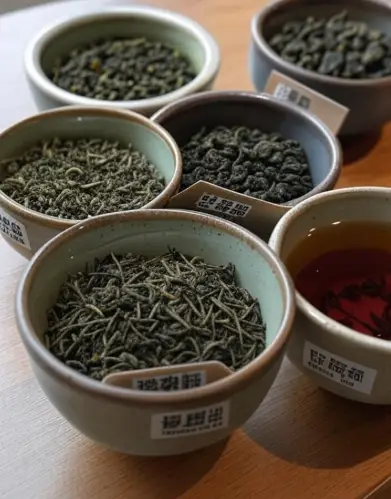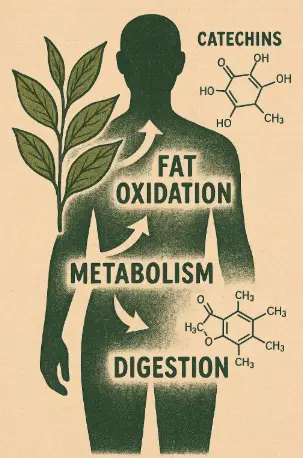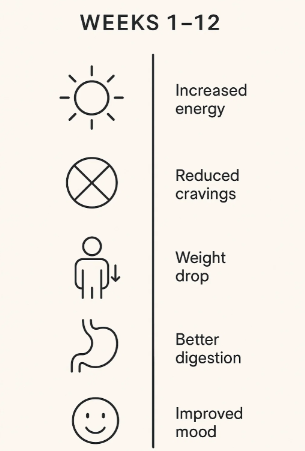Why Drink Chinese Tea to Lose Weight?
If you’re trying to lose weight naturally, you’ve probably experimented with different diets, supplements, and exercise regimens. Chinese tea is an age-old, tried-and-true remedy that can be found amid all these contemporary remedies. Chinese teas are not only a cultural mainstay but are also highly valued for their potent health advantages, particularly their capacity to support weight loss, increase metabolism, and enhance general well-being.
Everything from scientific studies and advantages to particular tea varieties, brewing techniques, and how to successfully integrate them into your daily routine will be covered in this comprehensive book on Chinese tea for weight loss.
Why Is Chinese Tea Unique for Losing Weight?
Chinese tea is a broad category that includes black tea, white tea, oolong, pu-erh, and green tea. Their profusion of antioxidants, polyphenols, catechins, and occasionally probiotics is what ties them together. These substances complement one another to:
- Boost the metabolism of fat.
- Suppress your appetite
- Control blood sugar levels.
- Cleanse the body
- Encourage the health of your digestive system.
Chinese teas are perfect for anyone worried about their weight because they are low in calories, naturally high in caffeine, and may be eaten without additives.
Chinese Tea Types and Their Special Weight Loss Benefits

1. Lü Cha, or green tea
- Active ingredients: L-theanine, catechins, and EGCG
- Benefits of weight loss:
- Boosts metabolism
- encourages the burning of fat
- Increases stamina when exercising
- Studies:
- Green tea dramatically decreased body weight and sustained weight loss over time, according to a meta-analysis published in the International Journal of Obesity.
2. Wu Long Cha, or Oolong Tea
- Semi-oxidized fermentation that occurs between black and green tea
- Benefits of weight loss:
- Increases energy use
- promotes the oxidation of fat
- Improves the metabolism of fats
- Studies:
- After six weeks of intake, oolong tea dramatically decreased body fat in obese participants, according to a study published in the Chinese Journal of Integrative Medicine.
3. Pu Er Cha, or Pu-erh Tea
- Type: Black tea fermentation with probiotic properties
- Benefits of weight loss:
- Controls the metabolism of fats.
- enhances the gut microbiota
- lowers visceral fat
- Studies:
- According to research in the Food & Function journal, pu-erh encourages fat breakdown and inhibits lipogenesis.
4. Bai Cha, or white tea
- Processing: Very little
- Benefits of weight loss:
- Prevents the production of new fat cells
- Rich in antioxidants that promote the metabolism of cells
- Calm and gentle, lowering stress-induced eating
5. Hong Cha, or black tea
- Processing: Completely oxidized
- Benefits of weight loss:
- Modifies intestinal flora to decrease the absorption of calories
- supplies long-lasting energy
- An excellent substitute for sugar-filled sodas
The Science Behind the Sip: How Chinese Tea Works

Fat Oxidation and Thermogenesis
Thermogenesis, the process by which your body burns calories to produce heat, is stimulated by substances like coffee and catechins. Higher fat oxidation results from this, particularly when exercising.
Regulation of Appetite
Chinese teas affect hunger and satiety-regulating hormones such as ghrelin and leptin. Tea consumption before meals can lower caloric intake.
Metabolic Health and Gut Health
Black tea and pu-erh enhance gut microbial diversity, which directly affects weight control and metabolic health.
Detoxification
Drinking tea on a regular basis promotes liver health and the elimination of toxins, which can increase metabolic effectiveness and decrease fat storage.
How to Get the Most Weight Loss Out of Chinese Tea
Ideal Hours for Drinking:
- Start your metabolism in the morning.
- Reduce appetite before meals.
- Increase the oxidation of fat while working out.
- After Large Meals: Promote better digestion
Tips for Brewing:

- Don’t use honey or sugar.
- For most teas, brew at the proper temperature, which is between 80 and 90°C.
- For higher-quality tea, use loose-leaf tea.
- For noticeable effects, consume two to three cups each day.
Tea-Drinking Plan:
| Time | Tea Type | Benefits |
| Morning | Green Tea | Boosts metabolism |
| Pre-lunch | Oolong | Appetite control, digestion |
| Afternoon | Pu-erh | Fat burning, gut health |
| Evening | White Tea | Relaxation, antioxidant repair |
Expectations: Timeline and Realistic Outcomes

Your entire lifestyle has an impact on how much weight you lose. Nonetheless, regular tea drinking may result in:
- Weeks 1–2: More vitality and fewer cravings
- Weeks three and four: Weight and abdominal fat somewhat decreased
- Months two and three: Notable weight loss, better mood, and digestion
Mix with:
- Meals that are balanced (high fiber, low carb)
- Regular exercise
- Restful sleep
Typical Myths Dispelled
Myth 1: “You can lose weight just by drinking tea.”
The truth is that teas help people lose weight, but they must be used in conjunction with a balanced diet and way of life.
“The more tea, the better” is the second myth.
Reality: Sleeplessness and dehydration can result from consuming too much caffeine. Keep your daily intake at 3–4 glasses.
Myth 3: “The effects of all teas are the same.”
The truth is that every variety of tea has a distinct flavor. Some affect digestion or hunger, while others focus on fat metabolism.
Where Can I Get Real Chinese Tea?
Seek out:
- Sources of certified organic
- Using loose-leaf tea instead of tea bags
- Companies with open sourcing
- Websites such as Amazon or Yunnan Sourcing are great choices.
Possible Adverse Reactions and Safety Measures
Tea is typically safe, but it can lead to:
- Anxiety and jitters due to caffeine sensitivity
- Diminished absorption of iron due to tannin interference
- Drug interactions, such as those involving blood thinners
Advice: Before beginning a new tea regimen, always get medical advice, especially if you are pregnant, nursing, or taking care of a chronic illness.
Psychological and Emotional Advantages

Tea ceremonies are peaceful and soothing. Developing an attentive tea-drinking routine can:
- Cut back on emotional eating.
- Promote healthy habits
- Give yourself a sense of control over your path to wellness.
FAQs: Chinese Tea for Weight Loss
Can Chinese tea help me shed abdominal fat?
Indeed, when combined with healthy behaviors, teas like green and pu-erh have been demonstrated to lower visceral fat.
Is oolong tea or green tea better for weight loss?
Both are advantageous. The greatest tea for metabolism is green tea; oolong provides balanced appetite management and fat burning.
Is it okay to have tea at night?
To prevent sleep disruptions, limit your evening tea consumption to low-caffeine options, such as white tea.
Conclusion: The Reasons This Age-Old Method Is Still Effective
Chinese teas combine traditional knowledge with contemporary research to provide a natural, holistic approach to weight management. Tea promotes long-term wellness in contrast to medications or crash diets. It promotes habit and mindfulness while nourishing the body and mind.
In addition to aiding in weight loss, selecting the appropriate teas and carefully incorporating them into your daily routine promotes a healthy, sustainable lifestyle.

